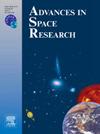使用超参数调优深度学习技术在查谟和克什米尔拉杰里地区进行森林火灾易感性和敏感性分析的高级建模
IF 2.8
3区 地球科学
Q2 ASTRONOMY & ASTROPHYSICS
引用次数: 0
摘要
森林资源对维持全球人口、调节气候服务和维持整体生态平衡至关重要。然而,森林火灾正在造成世界范围内森林覆盖的重大损失。在这种情况下,先进的深度学习技术,这是迄今为止新颖的,已被用于编制森林火灾易感性地图。本研究旨在利用深度神经网络(DNN)、elman神经网络(ENN)和卷积神经网络(CNN)三种超调谐技术预测森林火灾易感性。为了确定影响因素的重要性,使用深度神经网络进行敏感性分析。森林火灾易感度图(FFSM)划分为极高、高、中、低、极低5个易感区。结果表明,研究区南部和东南部最容易发生森林火灾。研究区DNN、ENN和CNN的高易感区分别占34%、37%和30%。在所有模型中,DNN的准确率最高,达到0.8925,高于ENN(0.8825)和CNN(0.87)。敏感性分析进一步表明,蒸散发、温度、地表温度、道路距离、干旱和海拔是该地区森林火灾的主要影响因素。这项研究展示了一种先进的、与全球相关的森林火灾易感性分析方法。这些发现可能对利益攸关方和决策者就有效的森林火灾管理做出明智的决定以及保护脆弱社区免受意外损失至关重要。本文章由计算机程序翻译,如有差异,请以英文原文为准。
Advanced modeling of forest fire susceptibility and sensitivity analysis using hyperparameter-tuned deep learning techniques in the Rajouri district, Jammu and Kashmir
Forest resources are crucial for sustaining the global population, regulating climate services, and maintaining overall ecological balance. However, forest fires are causing a significant loss of forest cover worldwide. In this context, advanced deep learning techniques, which are novel to date, have been utilized to prepare forest fire susceptibility mapping. The present study aimed to predict forest fire susceptibility using three hyper-tuned techniques: deep neural network (DNN), elman neural network (ENN), and convolutional neural network (CNN). To identify the importance of influencing factors, sensitivity analysis was conducted using the DNN. The forest fire susceptibility map (FFSM) was categorized into five susceptibility zones: very high, high, moderate, low, and very low. Results indicated that the southern and southeastern parts of the study area are most prone to forest fires. The proportion of high susceptibility zone in the study area was found to be 34% for DNN, 37% for ENN, and 30% for CNN. Among all the models, DNN outperformed the others, achieving the highest accuracy of 0.8925, compared to ENN (0.8825) and CNN (0.87). Sensitivity analysis further revealed that evapotranspiration, temperature, land surface temperature (LST), distance to roads, aridity, and elevation were the most influential factors contributing to forest fires in the region. This study demonstrates an advanced and globally relevant approach to forest fire susceptibility analysis. The findings may be crucial for stakeholders and policymakers to make informed decisions regarding effective forest fire management and to protect vulnerable communities from unexpected losses.
求助全文
通过发布文献求助,成功后即可免费获取论文全文。
去求助
来源期刊

Advances in Space Research
地学天文-地球科学综合
CiteScore
5.20
自引率
11.50%
发文量
800
审稿时长
5.8 months
期刊介绍:
The COSPAR publication Advances in Space Research (ASR) is an open journal covering all areas of space research including: space studies of the Earth''s surface, meteorology, climate, the Earth-Moon system, planets and small bodies of the solar system, upper atmospheres, ionospheres and magnetospheres of the Earth and planets including reference atmospheres, space plasmas in the solar system, astrophysics from space, materials sciences in space, fundamental physics in space, space debris, space weather, Earth observations of space phenomena, etc.
NB: Please note that manuscripts related to life sciences as related to space are no more accepted for submission to Advances in Space Research. Such manuscripts should now be submitted to the new COSPAR Journal Life Sciences in Space Research (LSSR).
All submissions are reviewed by two scientists in the field. COSPAR is an interdisciplinary scientific organization concerned with the progress of space research on an international scale. Operating under the rules of ICSU, COSPAR ignores political considerations and considers all questions solely from the scientific viewpoint.
 求助内容:
求助内容: 应助结果提醒方式:
应助结果提醒方式:


